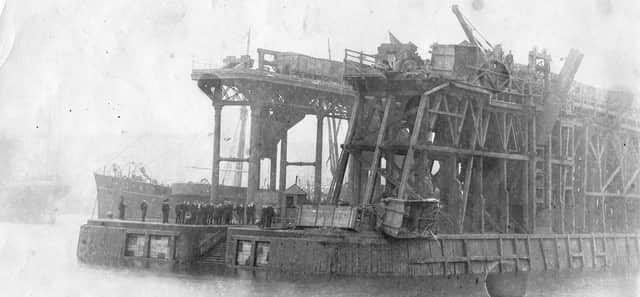ON THE WATERFRONT: Jetty that became a choke point and hazard to shipping


Stretching from the west side of the dock for more than half its width, the jetty became a notorious navigational choke point and hazard to shipping. It started life as a quay wall - formed as the original south boundary of the first stage of Sunderland Dock Company’s dock, opened in 1850.
By 1855, a southern dock extension had been completed with a narrow strip of land segregating the two dock areas being left in place to provide additional coal shipping berths. This became known as Tongue Jetty, which protruded towards the entrance of the old South Half Tide Basin, which provided a direct link with the sea. Excavation and dredging created a confined navigational channel at the jetty’s eastern extremity to permit ships to enter and leave the dock extension. Steps at the end allowed rowing boats to ferry passengers across the dock to East
and Sheers Quays.
Advertisement
Hide AdAdvertisement
Hide AdFrom an early date, No 18 Coal Staiths had been erected on the north side of the
jetty, with No 19 Staiths running parallel on the south. In December, 1871, in honour of George Hudson, the waterspace north of Tongue Jetty became known as Hudson Dock North and that to the south as Hudson Dock South.
Reconstruction of the old half-tide basin into a new sea lock was completed in October, 1880 and accompanied by an increase in dimensions of ships using the South Outlet.
In May, 1881, the RWC acting on the recommendation of their advisor Sir John Coode, decided to shorten Tongue Jetty by 60 feet at a cost of £3,434 15s. In 1890, the old wooden No 19 coal drops were replaced by new cast iron staiths costing £30,000, with the old jetty wall being underset with concrete and faced with brickwork.
Advertisement
Hide AdAdvertisement
Hide AdThe coal staiths were destroyed in a 1940 German air raid, while the derelict Tongue Jetty was completely removed by the mid-1960s.
The photograph shows Tongue Jetty coal staiths after a mishap in 1893. Note the ferry steps at the end.